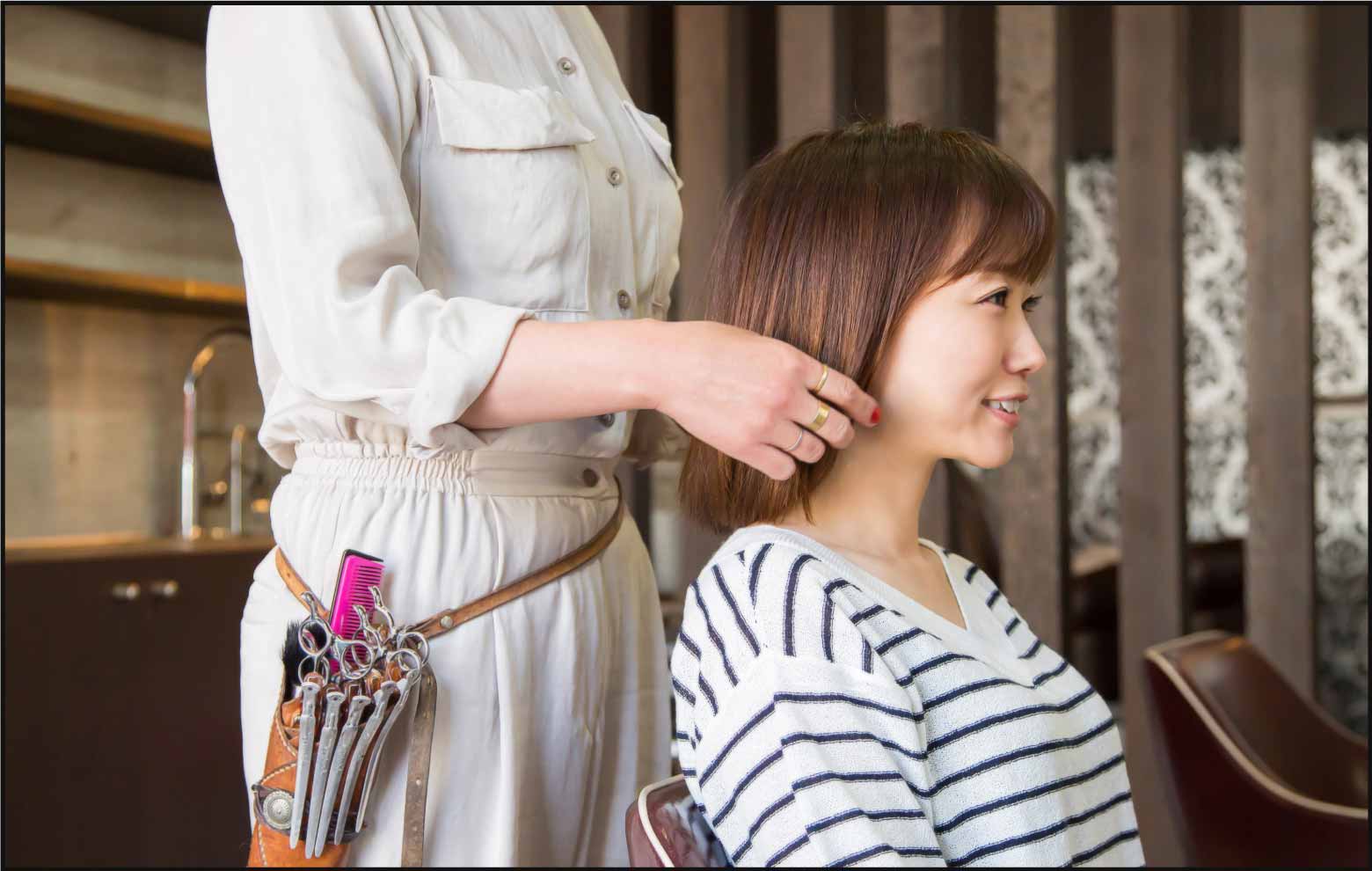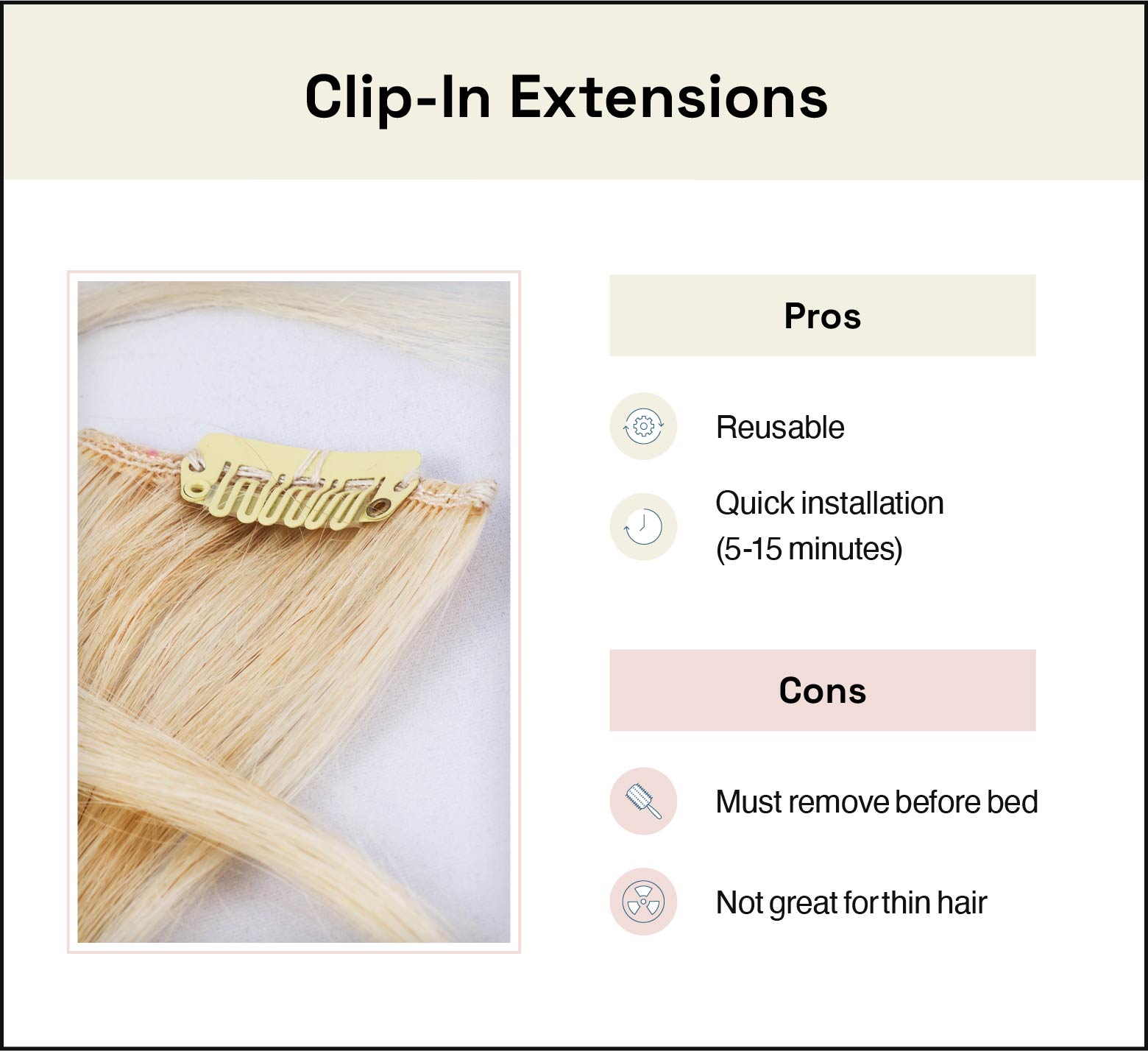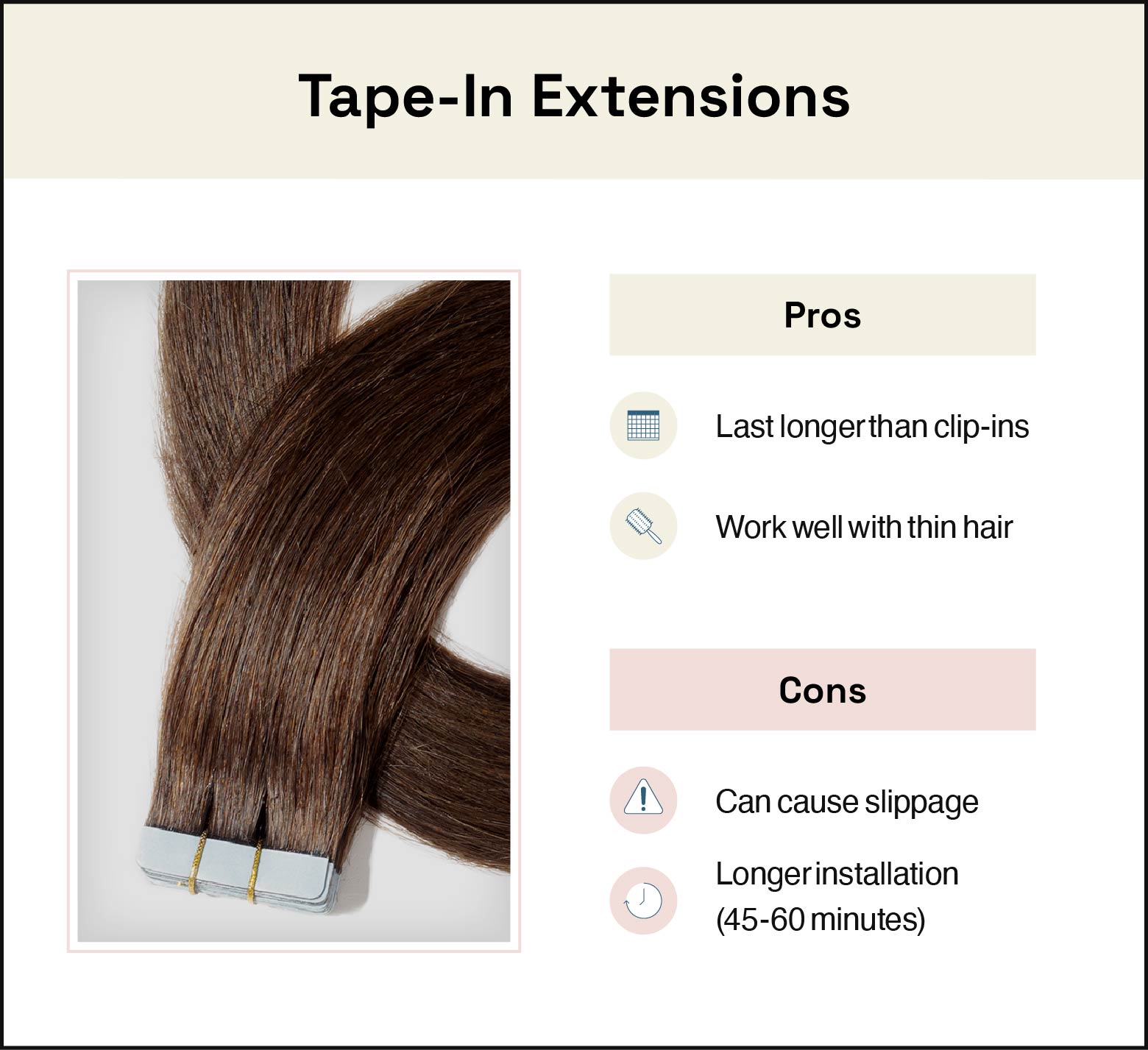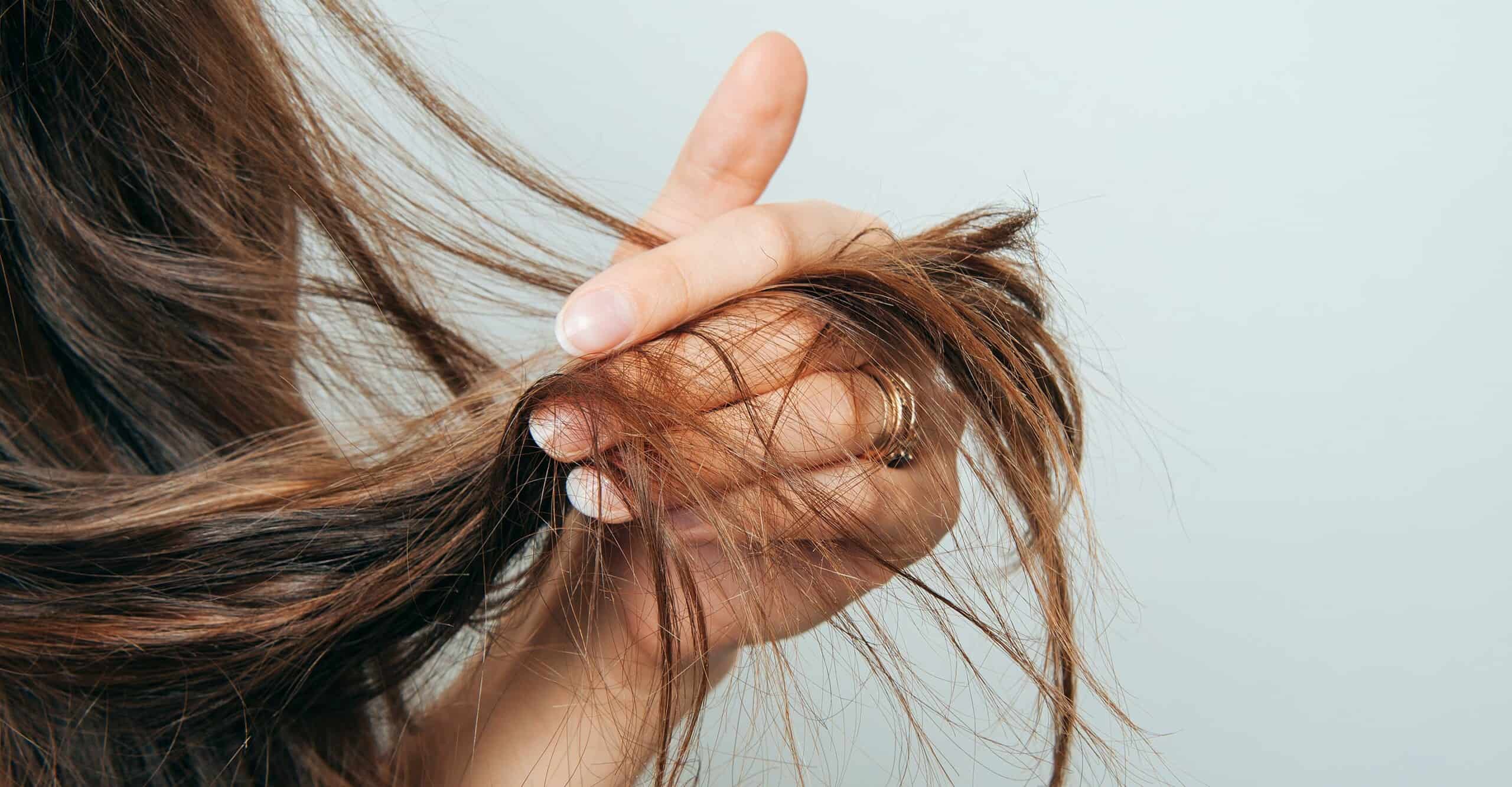How to Hide Extensions in Very Short Hair

Whether you love your short hair and want to experiment with different styles or you’re looking to remedy sparse, thinning hair, hair extensions make it easy to achieve long, full-bodied locks. But depending on how short your ‘do is, you might be wondering if you can put extensions in very short hair.
Yes, you can — whether you want to add length, volume, or both, your desired style is possible to achieve even with very short hair. While it can be tough to conceal extensions in shorter hairstyles, there are plenty of talented local stylists who can make it happen using the right technique. Here’s everything you should know about how to hide extensions in very short hair and what to ask your stylist to achieve your dream hairstyle.
Why is hiding extensions in very short hair difficult?
Not all hair is easy to blend in hair extensions, particularly when it comes to those with very short hair — simply because it’s harder to naturally blend shorter strands of hair into long hair extensions. To achieve a well-blended look, you’ll need the right technique to properly hide extensions in naturally short hair. Since blending extensions with short hair proves a bit more challenging, it’s important to work with a professional stylist to give you the look you want while keeping your extensions concealed.
How to hide extensions in very short hair: 5 things to ask your stylist
Hiding extensions in very short hair is 100 percent possible with the right technique and proper installation method. Choosing the wrong extensions or undergoing improper installation can do more harm than good, so it’s important to understand what to ask your stylist before booking your appointment.
What color extensions should I choose?
Selecting extensions in the wrong color will make hiding your natural hair far more difficult. Since most of the extensions will be placed at the crown of your head, you’ll need to select a shade that blends well with the bottom portion of your hair, since that’s where the extensions will fall.

While it’s fine to have a certain color and look in mind, work with your stylist to find the precise shade of extensions to achieve a seamless look that blends well with your current hair color.
What weight set do I need?
The weight of the extensions you choose is critical to concealing hair extensions. Those with very short hair should opt for a heavier weight set of around 220 grams. Why? Because the thickness of the set helps create a seamless transition between the ends of your hair and the extensions, leaving no trace of the extensions behind.
It’s a common misconception that those with thin, short hair should go for a lighter set, but if your goal is to add length to very short hair, ask your stylist about a heavier set. This will ensure the finished style looks as natural and seamless as possible.
How can I ensure a well-blended look?
If there’s a significant difference between the length of your real hair and the extensions, it will be harder to achieve a well-blended look. To remedy this, your stylist should trim the hair extensions to help them blend more naturally. Adding long hair extensions to short hair without a layering trim will create an unnatural style.
Your stylist should identify where your shortest strands of natural hair are and begin carefully trimming the extensions in these areas. Remember, your stylist shouldn’t be cutting any of your real hair — just the extensions.
What’s the best way to hide the bases?
If you have very short hair, the hair at the nape of your neck will be much shorter than your extensions. If not properly concealed, the base of your hair tends to pop out from beneath the extensions, making the extensions more obvious.
To avoid this, ask your stylist about the best method for making those bases disappear. This can be done by pinning the shorter strands at the nape of your neck, or by braiding or twisting the strands across the bottom of your hairline and securing them with a pin. This will all be concealed once your extensions are installed, as they’ll fall on top of the pinned or braided strands and keep them out of sight.
What styling method will best hide the extensions?
When it comes to styling your extensions, curling or straightening the extensions with your real hair is an easy way to keep them hidden and help them blend more seamlessly with your natural hair. Whether you’re adding soft waves and curls or want to create a straight style, curl or straighten small sections of your extensions with your real hair. This helps to blur the visual distinction between your natural locks and the extensions.
For the most glamorous and well-blended look, have your stylist create your desired style after your extensions are installed.
Best extensions for short hair
One of the keys to hiding extensions in short hair is selecting the right type of extensions. With such a wide range of options, choosing the right kind can be overwhelming, especially if you have specific needs. Below are some of the most popular extensions to consider if you have short hair, but be sure to talk with your stylist for further recommendations that align with your needs.
Clip-in extensions
Clip-in extensions have sewn-in clips that attach to the base of the hair during application. They’re a popular low-commitment option if you’re looking for something more temporary. Installation is quick — usually less than 15 minutes — and doesn’t require any heat or glue, which is a plus if you want to avoid excess hair damage or breakage. They’re also more affordable than other types of extensions.
That said, those with thinner hair might not be the best candidates for clip-in extensions since they’re more prone to slip out. Get your stylist’s input on whether or not clip-ins would work well with your hair type before installation.
Best for: Temporary styles

Tape-in extensions
Tape-in extensions are installed using an inch-wide piece of tape that secures to your natural hair with an adhesive. Like clip-ins, they don’t require any heat or glue to be installed, and are gentler than other methods. They’re also a great option for those with thinner hair. Keep in mind that oil-based products can cause tape-in extensions to slip, so it’s best to avoid those products if you opt for tape-ins.

Tip extensions
Also known as I-tip or cold fusion extensions, tip extensions are installed by attaching small sections of the extensions to your natural hair. This is done by threading a microbead into your natural hair, then threading the extension through the bead.
I-tips are a great option for those with short hair because the meticulous installation process creates a well-blended look. While this method doesn’t require any heat or hair balm, breakage is possible if the extensions are installed too tightly, especially if you have thin or damaged hair.

Alt text: photo of blonde tip extensions on the left and list of pros and cons on the right
Hair extensions are a great solution to transforming your ‘do into the full-bodied length you’re after, and hiding them in short hair is totally achievable with the right type of extensions and proper installation. To find a reputable stylist in your area, be sure to check out local listings on StyleSeat.


